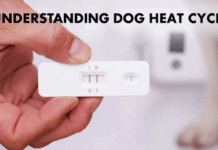Last Updated on August 27, 2024 by Dog Lover
Dogs Have Vocal Cords: Dogs, much like humans, have vocal cords that enable them to produce a variety of sounds. This vocal ability is one of the many ways dogs communicate with their owners and the world around them.
From a small dog barking at the door to the howls of a Siberian Husky, canine vocalizations are as varied as they are intriguing.
But how exactly do dogs produce these sounds? And what role does domestication play in shaping these vocal habits?

Canine Anatomy and the Mechanics of Barking
Dogs produce sound through a process that begins in the larynx, also known as the voice box. The vocal cords within the larynx vibrate as air passes through, creating sound waves.
The shape and size of a dog’s vocal cords, along with other factors like the dog’s age and size, influence the pitch and volume of the sound produced.
For example, a puppy’s bark is distinctly different from that of an adult dog, just as a Chihuahua’s bark differs from a Saint Bernard’s.
The Role of Vocalization in Dog Communication
Vocalization is just one way dogs communicate. While barking is the most common sound associated with dogs, they also use other forms of vocalization, such as growling, whining, and howling, to express different emotions and needs.
These sounds are often accompanied by body language, which provides additional context to what the dog is trying to communicate.
For instance, raised neck hair on a growling dog signals aggression, while a dog rolling onto its back while whining shows submission.

Nuisance Barking: Dogs Have Vocal Cords
Nuisance barking is a common issue that can strain the human-canine relationship. Several factors contribute to excessive barking, including the dog’s breed, age, and environment.
For instance, younger dogs or those from herding breeds are more prone to barking. However, with proper training and environmental management, nuisance barking can be significantly reduced.
Identifying the triggers that cause a dog to bark excessively and addressing them through positive reinforcement can lead to a quieter, happier pet.
Canine Devocalization: A Controversial Procedure
Canine devocalization, or debarking, involves surgically altering a dog’s vocal cords to reduce the volume of its bark. While some advocate for this procedure as a solution to excessive barking, it is highly controversial and illegal in many countries.
Critics argue that devocalization addresses the symptom rather than the cause of the problem and can lead to significant health risks for the dog. Instead, they recommend training, socialization, and providing mental stimulation to address barking issues.

Final Thoughts: Dogs Have Vocal Cords
Dogs’ vocal cords are essential for communication, just as they are in humans. Understanding and addressing the reasons behind a dog’s vocalizations can help improve the human-canine bond and prevent issues like nuisance barking.
Pet owners should seek help from professionals, such as veterinarians or behaviorists, before considering drastic measures like devocalization.
Remember, barking is a natural behavior for dogs—how we manage it is key to a harmonious relationship with our furry friends.

















